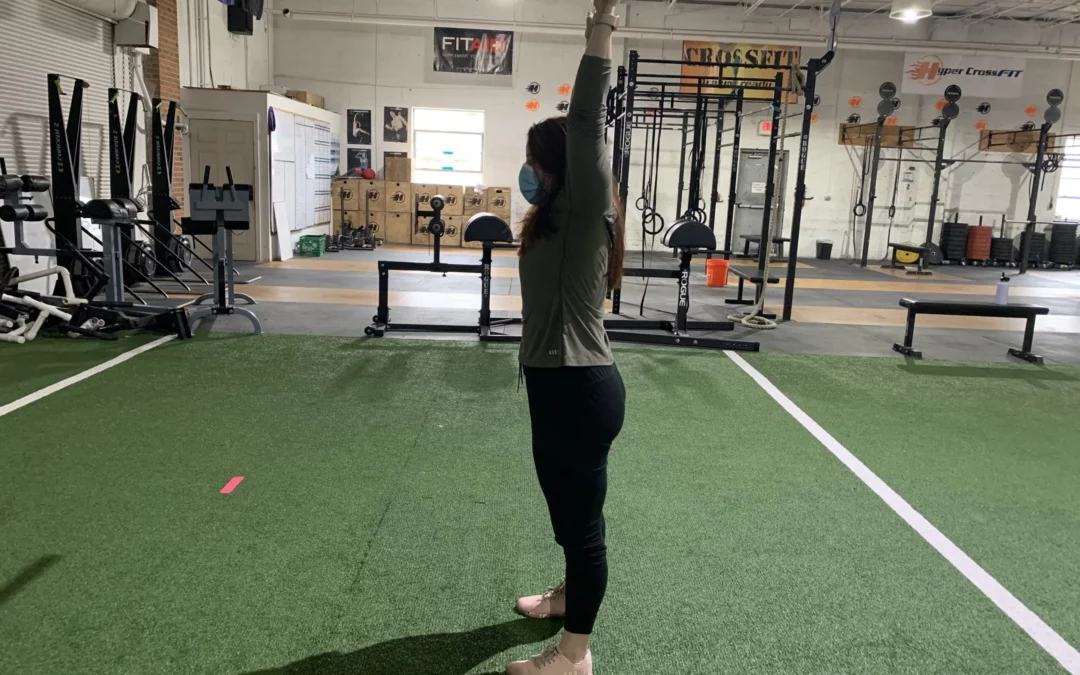Importance of Overhead Lifting
Achieving a full overhead position is an important part of daily function. It can mimic certain activities, such as reaching into a cabinet, putting away storage bins, or cleaning. Overhead positioning can also be an optimal position for strength training to challenge the core, the upper extremities, and lower extremities. This is commonly performed through overhead lifting exercises. While it is an important position in our daily lives, there can be a number of things that can either make this motion limited or painful for the general population.
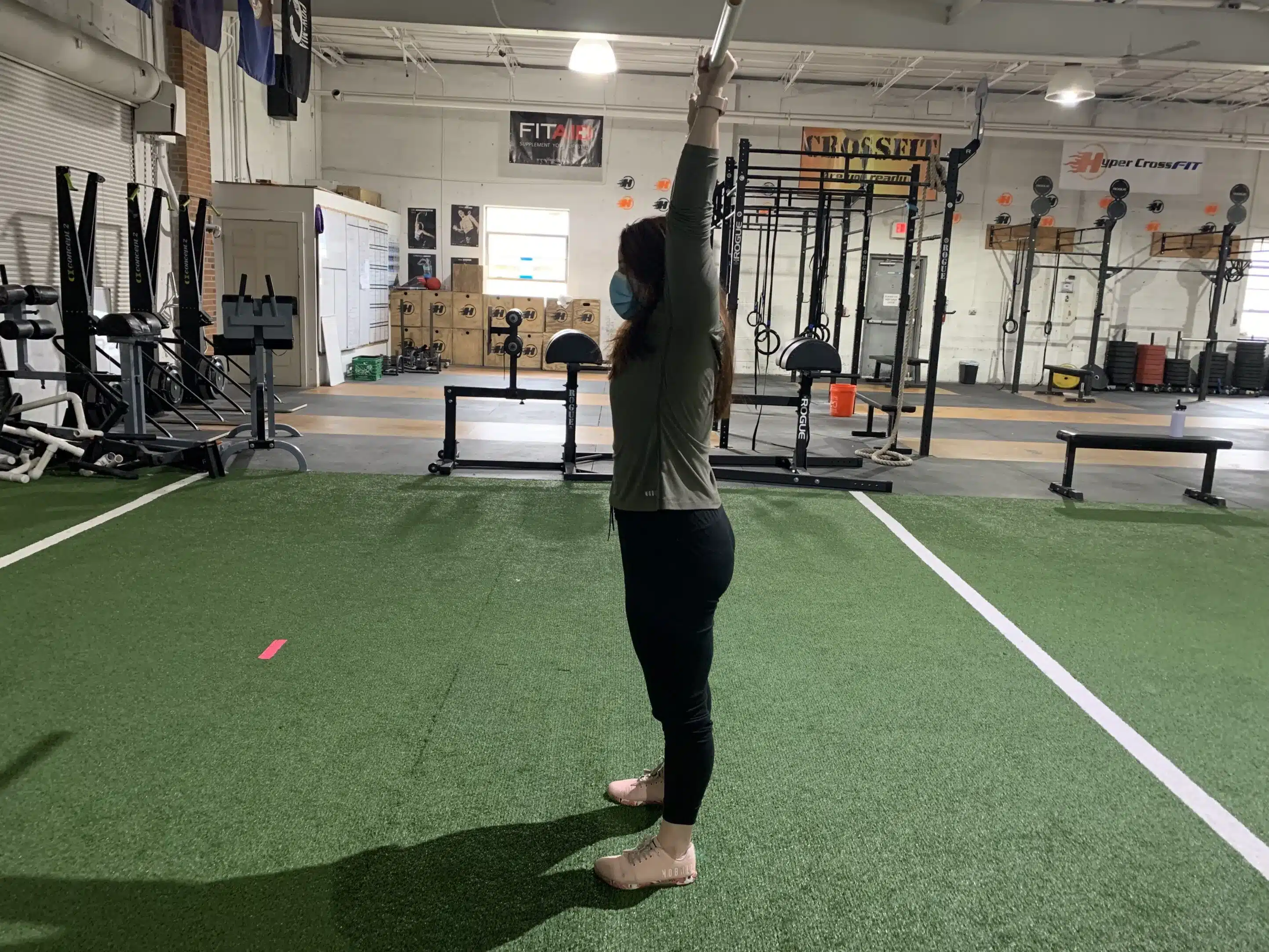
The Latissimuss Dorsi Muscle and Overhead Lifting
One of the possible causes of restricted overhead positioning is latissimus dorsi tightness. The lattisimuss Dorsi muscle, commonly referred to as the “lats”, attaches from the pelvis, the low and mid back all the way to the top of the shoulder. Its function is to bring the arm closer to the body, turn the arm in, or reach behind the body. If there is tightness in this muscle, it will not be able to effectively stretch in order to reach away from and above the body or turn the arm out, two important aspects of obtaining an overhead position properly.
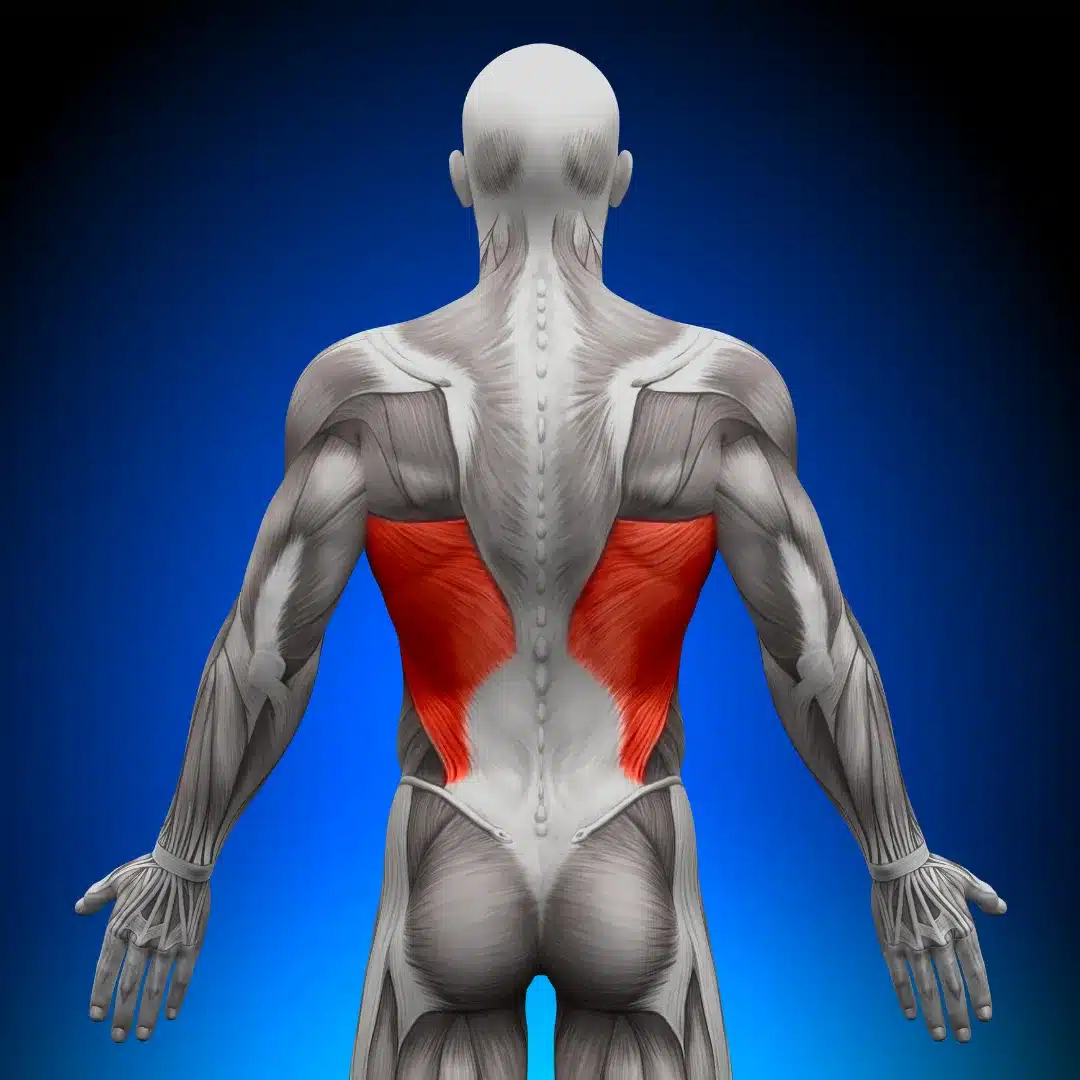
The Thoracic Spine and Overhead Lifting
The thoracic spine, or mid back region, can also affect shoulder overhead position, whether it is a mobility issue or an activation issue. While the thoracic spine does not have as much available movement as other areas of the spine, if there is stiffness in this region, the shoulder joint will have a harder time getting into a stacked position. On the other hand, there can be adequate joint mobility, but more so weakness or muscle imbalances of the muscles around the shoulder blade, which surround the thoracic spine. These muscles work together to raise the arm overhead and then stabilize the shoulder once in an overhead position.
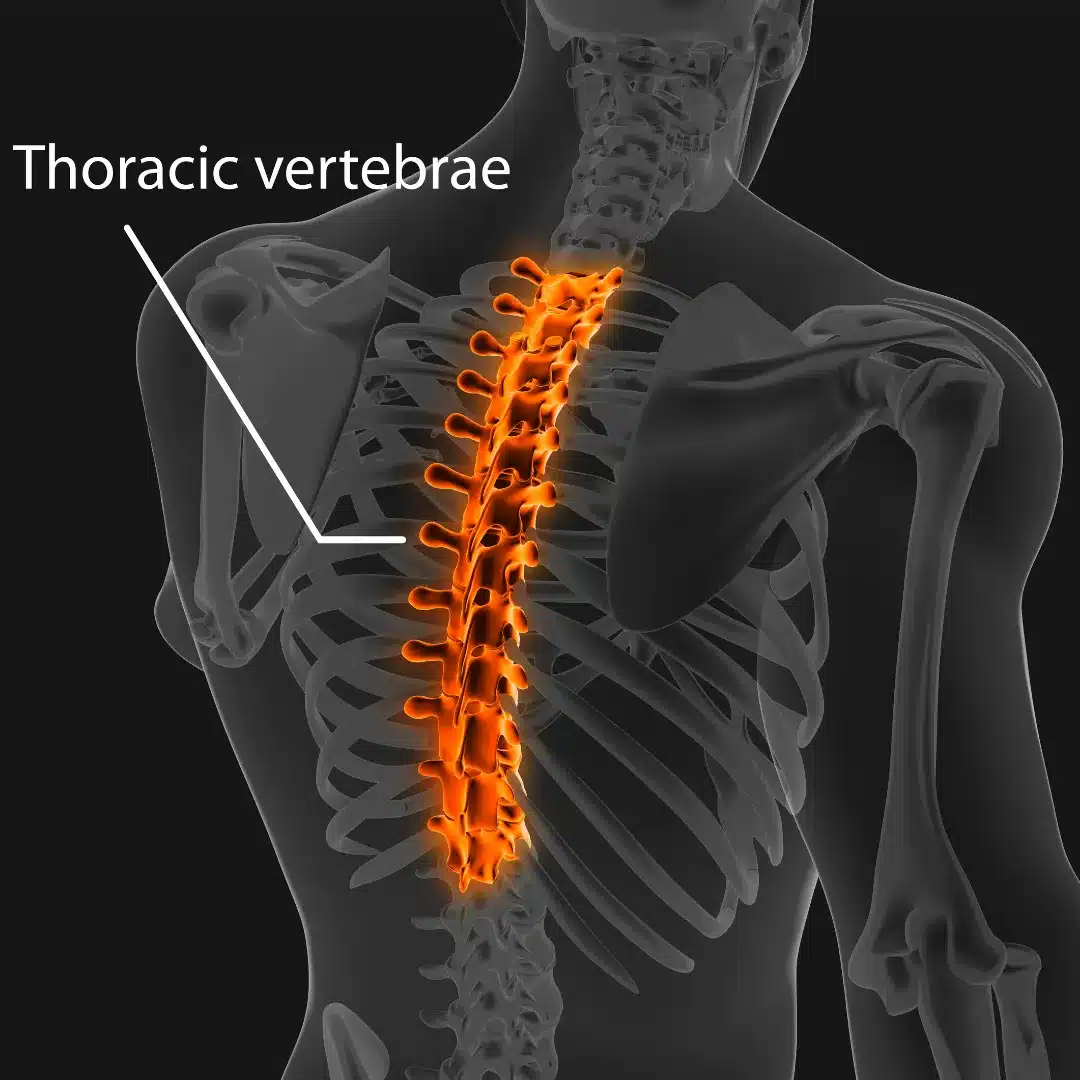
Common Faults with Overhead Positioning
A common fault in overhead positioning due to decreased thoracic mobility or strength, and lat tightness can include rib flaring or overextending the spine (see below picture), which places the shoulder in a less than optimal position for carrying load. The ideal position for is a relatively neutral spine, keeping your arm in line with your ear, wrist stacked over shoulder while trying to punch the ceiling. Placing the shoulder in a less than optimal position with repetitive overhead lifting or lacking the strength of stability of the shoulder and thoracic spine to maintain an overhead position can, over time, lead to muscle and joint irritation.
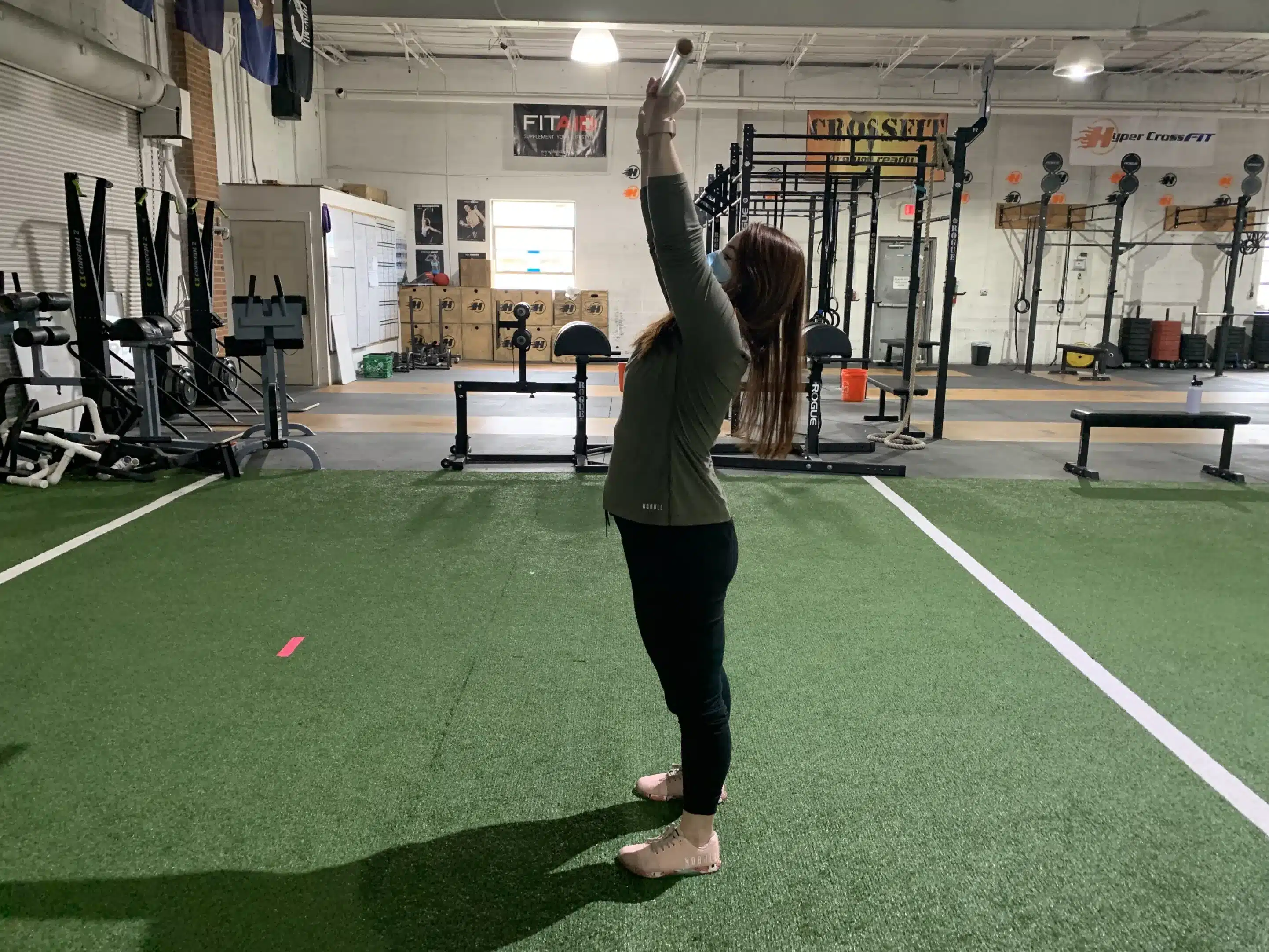
Physical Therapy and Overhead Lifting
If you are one who is experiencing pain or restriction with overhead reaching, one of our skilled physical therapists can determine what could be the contributing factor through one-on-one examinations and guide you through a treatment regimen including manual therapies and exercise.
Whether you need to reach the topshelf in the kitchen or you need to perform an overhead squat when exercising, our Doctors of Physical Therapy will help you improve your mobility, strength, stability, and overall ability to perform overhead activities.
Whether you need to reach the topshelf in the kitchen or you need to perform an overhead squat when exercising, our Doctors of Physical Therapy will help you improve your mobility, strength, stability, and overall ability to perform overhead activities.



